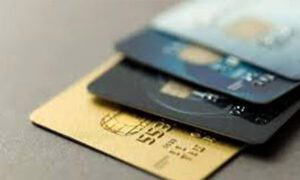A crypto wallet is a digital tool that stores the private keys needed to access and manage cryptocurrency. Unlike a traditional wallet that holds physical money, a crypto wallet doesn’t actually store coins or tokens. Instead, it keeps the secret codes that prove ownership of digital assets on the blockchain.
Think of it like a secure keychain for digital money. The wallet gives users the ability to send, receive, and track their cryptocurrency holdings. Without a wallet, people cannot interact with their digital assets or make transactions.
Crypto wallets come in different forms, from mobile apps to hardware devices. Each type offers different levels of security and convenience. Understanding how these wallets work is essential for anyone who wants to buy, sell, or use cryptocurrency safely.
Key Takeaways
- Crypto wallets store private keys that control access to digital assets rather than storing the actual cryptocurrency
- Different wallet types offer varying levels of security from mobile apps to physical hardware devices
- Proper wallet security practices protect users from losing access to their digital assets permanently
What Is a Crypto Wallet?
A crypto wallet stores digital keys that control access to cryptocurrency on the blockchain. These wallets manage public and private key pairs that enable users to send, receive, and track their digital assets.
Key Functions of Crypto Wallets
Crypto wallets perform three main tasks for cryptocurrency users. They store private keys securely, create digital signatures for transactions, and display account balances.
Storage of Private Keys The wallet keeps private keys safe from hackers and theft. Private keys prove ownership of cryptocurrency on the blockchain. Without these keys, users cannot access their digital assets.
Transaction Management When someone sends cryptocurrency, the wallet creates a digital signature. This signature proves the person owns the funds being sent. The wallet then broadcasts this signed transaction to the blockchain network.
Balance Tracking The wallet scans the blockchain to show current balances. It adds up all incoming transactions and subtracts outgoing ones. This gives users an accurate view of their cryptocurrency holdings across different digital assets.
Public and Private Keys Explained
Public keys and private keys work together as a pair in cryptocurrency systems. The private key stays secret while the public key can be shared with others safely.
Private Keys A private key is a long string of random numbers and letters. It acts like a password that controls cryptocurrency. Anyone who knows this private key can spend the associated digital assets. Users must never share their private keys with others.
Public Keys Public keys come from private keys through complex math. They create wallet addresses where people can send cryptocurrency. Public keys can be shared freely without security risks. Think of them like an email address that receives funds.
The cryptocurrency wallet uses both keys to verify transactions on the blockchain network.
Types of Crypto Wallets
Crypto wallets come in several different forms, each with unique security features and access methods. The main categories include internet-connected hot wallets, offline cold storage options, physical hardware devices, and paper-based solutions.
Hot Wallets
Hot wallets stay connected to the internet at all times. This connection makes them easy to use for daily transactions and trading activities.
Software wallets are the most common type of hot wallet. These include mobile wallets on smartphones, web wallets accessed through browsers, and desktop wallets installed on computers.
Mobile wallets work well for buying coffee or making quick payments. Popular examples include Trust Wallet and MetaMask Mobile.
Web wallets run in internet browsers without downloads. Users can access them from any device with internet. However, they depend on the website staying online.
Desktop wallets install directly on computers. They offer more control than web wallets but only work on that specific device.
Custodial wallets are another hot wallet type. These wallets let companies hold the private keys for users. Exchanges like Coinbase and Binance provide custodial wallet services.
Hot wallets trade security for convenience. Hackers can potentially access them because they connect to the internet. Users should only keep small amounts in hot wallets for daily use.
Cold Wallets
Cold wallets store crypto offline without internet connections. This isolation provides much better security against online attacks and hackers.
Cold storage keeps private keys away from internet-connected devices. Users must connect these wallets to the internet only when making transactions.
These wallets work best for long-term storage of large amounts. People often call this approach “hodling” their crypto safely.
Self-custody cold wallets give users complete control over their private keys. No company or third party can access the funds without permission.
Cold wallets take more time and steps to use than hot wallets. Users must plan ahead for transactions instead of making instant payments.
The main downside is convenience. Cold wallets require extra steps to send or receive crypto compared to always-online options.
Hardware Wallets
Hardware wallets are physical devices that store crypto offline. These small devices look similar to USB drives and provide strong security features.
Popular hardware wallet brands include Ledger, Trezor, and KeepKey. These devices cost between $50 and $200 depending on features.
Users connect hardware wallets to computers or phones only when making transactions. The device signs transactions internally without exposing private keys to the connected device.
PIN codes and recovery phrases protect hardware wallets from theft. Even if someone steals the device, they cannot access funds without these security measures.
Hardware wallets support many different cryptocurrencies. Most devices work with Bitcoin, Ethereum, and hundreds of other digital assets.
The main risks include losing the device or forgetting security codes. Users must store recovery phrases safely to restore access if needed.
These wallets offer the best balance of security and usability for most crypto owners.
Paper Wallets
Paper wallets store crypto information on physical paper documents. These contain printed private keys and public addresses needed to control funds.
Users generate paper wallets using offline computers to avoid internet security risks. The process creates new wallet addresses that never touch online systems.
Paper wallet generation requires special software that works without internet connections. Users print the results on paper and store them safely.
These wallets provide excellent security when created and stored properly. No hacker can access funds stored on correctly made paper wallets.
However, paper wallets have serious downsides. Paper can burn, tear, fade, or get lost easily. Water damage destroys the printed information permanently.
Using paper wallets for transactions requires importing private keys into software wallets. This process can expose the keys to internet-connected devices.
Modern hardware wallets offer better security and convenience than paper alternatives for most users.
Security Features and Best Practices
Crypto wallets use several key security methods to protect digital assets from theft and loss. Users must understand seed phrases, two-factor authentication, private key management, and basic safety practices.
Seed Phrase and Recovery Phrase
A seed phrase is a list of 12 or 24 words that acts as a backup for a crypto wallet. The recovery phrase lets users restore their wallet if they lose access to their device.
The wallet creates this phrase when users first set it up. Users must write down these words in the exact order shown. The seed phrase gives complete access to all funds in the wallet.
Users should store their recovery phrase offline on paper or metal. They should never save it on computers or phones where hackers might find it. Multiple copies stored in different safe locations work best.
Anyone who finds the seed phrase can steal all the crypto in that wallet. Users should never share these words with others or type them into websites or apps that ask for them.
Two-Factor Authentication and 2FA
Two-factor authentication adds an extra security step when logging into crypto accounts. Users need both their password and a second form of proof to access their wallet.
Common 2FA methods include text messages, email codes, and authenticator apps. Authenticator apps like Google Authenticator or Authy work better than text messages because they are harder to hack.
Hardware wallets often have built-in 2FA through physical buttons users must press. This makes it nearly impossible for hackers to access funds remotely.
Users should enable 2FA on all crypto exchanges and online wallet services. Even if someone steals their password, the second factor keeps their account safe.
Managing Private Keys
Private keys are long strings of numbers and letters that prove ownership of crypto assets. These keys sign transactions and move funds between wallets.
Users must never share their private keys with anyone. Anyone with access to a private key controls all the crypto linked to that key. Most wallet software hides these keys from users to prevent accidents.
Hardware wallets keep private keys stored safely offline. Software wallets store keys on devices, which creates more risk if the device gets hacked or stolen.
Users who export private keys should encrypt them with strong passwords. They should store encrypted keys in secure locations separate from their main devices.
Keeping Crypto Assets Safe
Users should start with small amounts when testing new wallets or services. This limits losses if something goes wrong during the learning process.
Regular backups protect against device failure or loss. Users should test their backups by restoring wallets on different devices to make sure they work properly.
Strong passwords help protect wallet software and exchange accounts. Users should create unique passwords for each crypto service they use.
Phishing websites try to steal wallet information by copying real crypto sites. Users should always check website addresses carefully before entering any wallet details or private information.
Popular Crypto Wallets and Use Cases
Different crypto wallets serve different needs, from simple bitcoin storage to complex DeFi trading. Some wallets work best for new users, while others offer advanced features for staking and NFTs.
Beginner-Friendly Wallets
Coinbase Wallet makes crypto simple for new users. It connects directly to the Coinbase exchange and handles bitcoin and ethereum with ease.
The wallet guides users through each step. It shows clear instructions for buying, sending, and receiving crypto.
Exodus offers a clean design that beginners love. Users can store over 260 different cryptocurrencies in one place.
The wallet includes built-in exchange features. People can swap between different coins without leaving the app.
Trust Wallet works well on mobile devices. It supports thousands of tokens and connects to popular apps.
The wallet lets users store NFTs alongside their regular crypto. It also works with decentralized finance platforms when users are ready to try them.
Wallets for Trading and Staking
Binance provides tools for active traders. Users can access spot trading, futures, and margin trading all in one place.
The platform offers staking rewards for many cryptocurrencies. People can earn passive income on their holdings while keeping funds accessible.
MetaMask connects users to decentralized finance protocols. It works as a browser extension and mobile app for DeFi trading.
Users can interact with lending platforms, yield farms, and liquidity pools. The wallet supports custom networks beyond ethereum mainnet.
Advanced traders often use hardware wallets like Trezor and Ledger for cold storage. They move funds to hot wallets only when making trades.
NFT and Web3 Integration
MetaMask leads the Web3 space for NFT collectors. It connects to OpenSea, Foundation, and other major marketplaces.
Users can view their NFT collections directly in the wallet. They can also participate in NFT drops and auctions.
Trust Wallet displays NFTs with full artwork and metadata. The mobile interface makes it easy to show collections to others.
The wallet supports multiple blockchain networks where NFTs exist. Users can manage ethereum-based and Binance Smart Chain NFTs together.
Coinbase Wallet recently added strong NFT support. Users can browse, buy, and sell digital collectibles through the interface.
The wallet integrates with Web3 games and social platforms. People can use their crypto identity across different applications.
Frequently Asked Questions
Crypto wallet security depends on proper key management and choosing reputable providers. Different wallet types serve various needs, from basic storage to advanced trading features.
How can one securely store cryptocurrency?
Users should store their private keys offline using hardware wallets or paper wallets. Hardware wallets like Ledger or Trezor keep keys away from internet threats.
They must create strong passwords and enable two-factor authentication. Backup phrases should be written down and stored in multiple secure locations.
Users should never share their private keys or seed phrases with anyone. Regular software updates help protect against new security threats.
What functionalities should a beginner’s crypto wallet have?
New users need wallets with simple interfaces and clear transaction histories. The wallet should support major cryptocurrencies like Bitcoin and Ethereum.
Basic send and receive functions must be easy to find and use. Price tracking and portfolio views help beginners monitor their investments.
Customer support and educational resources help users learn proper wallet management. Backup and recovery features protect against lost access.
How does a crypto wallet function in managing digital assets?
Crypto wallets store private keys that control access to blockchain addresses. They create digital signatures to authorize transactions on the network.
The wallet connects to blockchain networks to check balances and broadcast transactions. It displays user-friendly interfaces while handling complex cryptographic processes.
Users can view transaction history and manage multiple cryptocurrency types. The wallet calculates fees and confirms transactions with the blockchain.
What are some notable examples of cryptocurrency wallets?
MetaMask serves as a popular browser extension wallet for Ethereum and other networks. Coinbase Wallet offers mobile access with built-in exchange features.
Ledger Nano devices provide hardware security for long-term storage. Trust Wallet supports many cryptocurrencies through mobile apps.
Exodus offers desktop and mobile versions with user-friendly designs. Each wallet serves different user needs and security preferences.
What are the different categories of cryptocurrency wallets available?
Hot wallets connect to the internet and include mobile apps and browser extensions. They provide convenience for frequent transactions but face online risks.
Cold wallets stay offline and include hardware devices and paper wallets. They offer maximum security for long-term storage but less convenience.
Custodial wallets let companies manage private keys while users control access. Non-custodial wallets give users complete control over their keys and funds.
How does one convert cryptocurrency to fiat through a wallet?
Many wallet apps connect to cryptocurrency exchanges for direct conversion. Users can sell crypto and receive dollars or other currencies in linked bank accounts.
Some wallets include built-in exchange features for instant conversions. Others require transfers to separate exchange platforms for fiat withdrawals.
Users must complete identity verification for fiat conversions. Transaction fees apply for both the conversion and bank transfers.



































